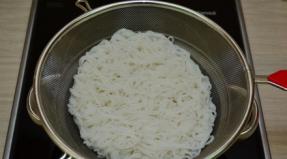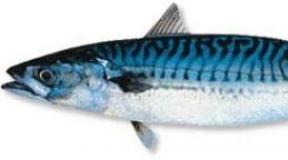Secrets of fast swimming for swimmers and triathletes. Sport drive - the secrets of fast swimming for swimmers and triathletes
Greg Phil, my swim coach. You lifted a stone block from my shoulders before the qualifying championship for the Olympic Games when you quoted the English scientist John Lubbock:
When we have done everything we can, we need to calm down and expect results.
Thanks also for reminding me that at least two billion people don't even know I'm going to compete and will never know if I did well or badly.


From the author
After the publication of the first edition of this book in 2010, teams of swimmers and triathletes from all over the world began to visit me, and I taught them the essential elements of stroke. The enthusiasm of the people I met confirmed that athletes are ready to work hard to achieve the best results. Feedback from those who have read my book or attended workshops has helped me understand how best to explain the concepts behind this book. The purpose of the second edition of the book was to supplement the original text, to refine the descriptions of technical methods, and where it is possible to go too far in the embodiment of the author's ideas, to warn the reader about it.
Like the first edition, this book is brevity in order to focus on those elements of stroke that dramatically affect speed. The changes and additions made are minor in scope, but nonetheless very important, so read the book carefully.
Thanks for your enthusiasm. The example of each of you gives me inspiration.
Sheila Taormina
Introduction
How did it happen that at the 2008 Olympic Games in Beijing and at the 2009 World Aquatics Championships in Rome, the best athletes broke all the records so actively that it was breathtaking, and at the same time, many triathletes, masters swimmers and amateurs ask themselves the question: why do their personal results, if they improve, then only slightly, and more often do not grow at all?
Elite athletes show almost unrealistic time at distances. The current women's world records match the men's world records of the early 1970s. This means that the time that Mark Spitz set at the 1972 Olympics is now shown by the best swimmers. The 200m freestyle is a great example of this. The women's world record is currently 1:52.98, while Spitz's Olympic gold medal in Munich was 1:52.78.
It doesn't matter what style or what distance we are talking about. In 1976, Jonty Skinner of South Africa set a world record with a time of 23.86 in the 50m freestyle. On August 2, 2009, German Britta Steffen swam it in 23.73. The women's 1500m freestyle world record is 15:42.54, 10 seconds faster than the men's world record set by the 1972 Olympic gold medalist.
The best male swimmers, like women, “take down” previous record marks at such a speed that most can only scratch their heads. All this lends an almost comic character to the assertion made by the famous Johnny Weissmuller. Weissmuller, who won five Olympic gold medals in swimming at the 1924 and 1928 Games, wrote in his book Swimming the American Crawl (Putnam, 1930) in the chapter "Can the crawl be improved?":
My technique is called “crawl perfected” because it allows you to reduce water resistance to a minimum, to bring breathing to the most natural, involuntary, conceived by nature itself. My technique gives the body a position in which it becomes possible to use all its strength and energy as freely and without any restrictions, create the necessary emphasis and at the same time receive maximum thrust per unit of effort applied. Some say that this style can still be improved. I don't see how this improvement could happen.
Let's be indulgent with Weissmuller for thinking that no one could ever improve on the time he set during the tumultuous 1920s. If only because during his swimming career he set 67 world records. Johnny has not actually lost a single official competition. Just think - never lost! In his place, I, too, would probably think that I had brought my crawl to perfection. Besides, Johnny didn't just dive and swim at random. In his book, he describes in great detail the reasons why he applied his technique. Everything is carefully thought out.
What is this technique? You may know it as the "Tarzan Technique" - a technique you practice in training when you keep your head above the water. If your coach likes to have fun, he probably insists that you also hoot like Tarzan during the swim (mine, for example, insisted).
This is the Weissmuller style, when the chest and shoulders are held high in the water. And the exercise itself is called "Tarzan", because Weissmuller, after ending his professional swimmer career, played Tarzan in several films. Here is another excerpt from the same book:
I swim with my chest and shoulders high in the water. This allows me to glide across the surface of the water like a speedboat, reducing drag to a minimum. I hold my body closer to the surface than anyone before me, higher than anyone to this day… A high chest position allows me to avoid the tension that comes from the forward bend that many swimmers do when turning their head to inhale. Thanks to the high position of the chest and shoulders, as well as the arch in the back back, my legs are low in the water and maintain traction in the water.
In continuation, Weissmuller writes that the hips should not swing in the water, otherwise the corresponding arm and shoulder will go deeper under the water and because of this there will be additional resistance.

Johnny Weissmuller (Tarzan) swims in a style that has earned him five Olympic gold medals and 67 world records
Modern freestyle as we know it is the exact opposite of what was described above. The only people who don't put their heads in the water are people who don't want to get their hair wet (my mom, for example). And everyone, without exception, is now vigilantly watching that the hips participate in the process of movement.
What am I getting at?
No, I'm not talking about reducing resistance. In fact, I'm going to use the names of Johnny Weissmuller and other "kings of the pool" of the last fifty years as examples to paint a picture of the history of swimming that has been missing for a long time - a picture that will help answer so many questions.
I'll start with the shocking information: although Weissmuller's records have long been broken (his record time at a distance of 100 m freestyle was improved already in 1934), they still remain unattainable for 95% of triathletes (even professionals of the highest class), swimmers of the "master" category and amateur swimmers. It is even strange to write about this, but Weissmuller would still win against almost every reader of this book today.
Let's go back to Weissmuller's era: in February 1924, he clocked 57.4 in the 100m freestyle long course. Of course, the world records of the Brazilian Cesar Ciela and the German Britta Steffen are higher - 46.91 and 52.07 (set at the 2009 World Championships). But how many readers of this book have the audacity to think they can show Weissmuller's time?
But Weissmuller set world records not only in short-distance swims. He held records for 400 and 800 m: 4:57.0 - for 400 m (1923), 10:22.2 - for 800 m (1927). Although these results are nowhere near as impressive as his time in the 100m freestyle, even today in a triathlon, Johnny would have put Johnny among the leaders (or very close to them) in the swimming stage.
I understand that Weissmuller's achievements may not impress anyone in the modern world of swimming, especially his results in the 400m and 800m (Weissmuller was definitely more of a sprinter than a stayer). And it may seem that I was counting on an audience that is still reaching out and reaching out to records set almost a hundred years ago. But don't close the book so quickly: it's sure to be useful for national-level swimmers and for those swimmers' coaches, because it talks as much about thought processes as it does about actual swimming technique. You may already be on the verge of breaking through to the upper echelons of the swimming elite, but just don't know how to climb to the next step. The ideas outlined here will help you take the right step.
The reason why many cannot find the answer to the question of how to improve their time or how to move to a new level is not a lack of information at all, but rather a lack of systematized information. Some swimmers try to do everything at once and end up doing nothing. Others work on skills that have little or no impact on their time. And all because no one explained to them what is most important and what should be developed in the first place. This book aims to change that state of affairs.
In every second of the time when you are working on a technique or directing a workout, you should know what and why you are doing it. This is definitely doable. And this is the only thing missing from modern sources. Many textbooks contain a huge amount of information, describe the stroke technique to the smallest detail, but almost none of them organize the information in such a way as to direct attention to the most important elements, and therefore develop an effective plan of action.
I have my own mantra in sports and in life. It concerns responsibility for decisions made and sounds like this: "Appoint a trump card!". In euker, my favorite card game, each player is given the opportunity to assign a trump (the strongest) suit during the game. Players must look at the cards they have been dealt and, when it is their turn, decide whether they are taking the lead in the game or giving it to an opposing player. I always welcome when players assign a suit. Be bold! Decide on the cards you have in your hand, and then make an informed decision on how to play the game.
We are rarely taught how to do this in life. My goal is to show you how the mindset should be so that you can develop this quality in swimming, and in fact become a launching pad for applying the same approach in all other areas of life.
In the book, I limited myself to describing only one style of swimming - freestyle - for two reasons. First, I wanted to write a book primarily for triathletes. It seems to me that it was they who adhered to only one swimming technique for too long. All the time they were given only a small fraction of the necessary information. And with assurances that the “swimmers” do just that. I want to show triathletes the real picture of what real swimmers do.
The second reason why I concentrated exclusively on freestyle is that I myself know this style, as they say, inside and out. I swam with this style at four Olympics, spent endless hours in the pool, thinking only about it. And I studied it. My height is only 157 cm, so I ended up on the Olympic team not because of the span of my arms, but because of the understanding of how to get the right information and effectively apply it in practice.
If you are new to swimming, don't let the information in this book intimidate you. The principle is simple: you will definitely understand everything, and this will help you see the path that leads to the achievement of goals.
Lastly, and perhaps most importantly, let's not overestimate the significance of what has been said in this book - after all, we are not solving a world problem. Everything should be joyful. I'm almost sure that if I had to make a choice between coffee and sports at one time, I would probably quit sports. (I'm kidding, I guess...) Let's move on and look for the answer to the question I asked at the very beginning of the "Introduction".
I wish you a pleasant journey on the way to understanding the wonderful sport of swimming!

Team USA Swimmers Allison Schmitt and Sheila Taormina demonstrate that swimming speed isn't just about arm span!
If you want to learn to swim even faster, breaking all your previous records, then you will have to work hard on your swimming technique and mental attitude in order to show a high degree of discipline in training. But the most important aspect is still the technique and it should be mastered first of all, otherwise you risk wasting time. If you want to quickly learn how to swim seconds or even minutes faster than usual, then start with the first step, described just below.
Steps
Work on improving technology
- The breaststroke and butterfly strokes are exceptions because your body moves in waves.
-
Stretch in length. Try to stretch the spine as long as possible while moving in the water. The more you stretch, the less turbulence you bring into your float, thereby reducing drag. For example, when swimming freestyle, you should throw the rowing arm further forward, thereby stretching the spine along with the movement of the body.
- Think, if you draw a needle through the water, how easy it will be for you to move your hand, and then pick up a rag and do the same. Notice how much water resistance the rag takes on with its clumsy shape.
-
Push off effectively! When you push off with your feet, you should not stick them out of the water or keep them deep down, as both will throw you off balance.
Improve your forward movement. This advice does not mean that you need to increase muscle mass and become stronger. You just have to practice the correct technique for each stroke. Remember that only 10% of your speed comes from your legs while your arms do the lion's share of the work, so you need to take great care of your strokes.
Use your sides. Don't be afraid to roll from one side to the other while doing arm strokes. This method will help you engage those massive back muscles as well as get the most out of your shoulder strength. It may take you some time to get used to this way of swimming, but trust me, it will be worth it as you will soon be swimming much faster.
Don't forget your core muscles. The core includes the muscles of the back, hips, and torso. These muscle groups are of particular importance when you roll from side to side in the water. At first, it will seem strange to you to pay more attention to the muscles of the body than to the arms and legs.
Imagine that the hand is an anchor. To increase your speed, you need to keep your arms, elbows, and forearms in line, facing backwards, which will help you swim on your back. Throw your arms as if they were anchors, clinging to the water in front of you and helping to move your body through the water.
Keep your head in a neutral position. In order to swim as fast as possible, you need to keep your head in a neutral position, looking down at the water and not lifting your head up. Raising your head up will automatically sink your hips deeper into the water and increase braking. Relax your neck, look down and do not raise your head. Remember that the whole body is false to be horizontal, like a needle or a torpedo.
- If you like to play with the imagination, then follow the advice of swimmer Garret Maccafery: “Imagine you are a whale and you have a blowhole in your neck, and you constantly need to keep this cavity open in order to breathe, otherwise you will die. If you angle your neck, you will block the blowhole and suffocate. Keep your neck at a right angle.”
-
Spread your fingers slightly as you swim. Spreading your fingers slightly, instead of squeezing them tightly together, creates an invisible web of water that allows you to produce 53% more power. The ideal distance between the fingers would be 20-40% of the diameter of your fingers.
How to swim faster in competition
-
Avoid making wrong turns. Even if you swim not in competitions, but in training, then you should still avoid making wrong turns, otherwise you risk acquiring bad habit, from which it will then be difficult to get rid of even at competitions. After all, you definitely do not want to be disqualified for not touching the board with both hands due to negligence in training.
Approach the wall quickly and swiftly. Many swimmers refer to the wall as a place to rest, even though it only lasts a fraction of a second. However, if you want to succeed, then you should not give in to this way of thinking. Approach the wall quickly, keeping your head down for a few strokes, except for the breaststroke, which will help you get ahead and perform better.
Get well off the wall. Push off powerfully from the wall so as not to lose the gained speed. When breaststroke, even doing one such push can give you a few seconds of time. Continue to stretch along the movement of the body in the water and you will swim as fast as ever.
Swim like a dolphin underwater. After making a powerful push, perform dolphin-style wave movements underwater, which will help you swim even faster.
Be persistent
-
Develop a clear set of workouts. If you are a team member, then your coach will help you in this regard. But it's also nice to have your own complex to be able to train on your own. Just swimming in the pool for hours on end won't get you any speed, but having an exercise routine that includes elements of aerobics, which means you swim longer, as well as moderate endurance training that focuses on swimming medium distances, can help you swim faster. Your training may contain various components, but the main emphasis should be on general endurance, speed and muscle endurance training. And here is an example of a possible organization of your training:
- 10-15% is spent on a light warm-up (4 x 100 easy swims with a 20-second break between swims);
- 10-20% is spent on technique and pushes (8 x 50 alternating drills of different swimming styles with wall take-off (1 time), rest 15 seconds)
- 40-70% will go to the main complex (6 x 200 with 30 seconds of rest or 12 x 100 with 15 seconds of rest);
- 5-10% will be spent on recovery (simple 100 meters).
-
Sign up for the swim team. Look for swim clubs in your city. Find out about the prices and times of classes and the necessary equipment. If you are not a member of any team, then you are still recommended to go and sign up for one of them, because training in a team will serve as a stronger motivator for you and bring better results. And also, the coach will tell you what needs to be corrected regarding swimming technique.
- If you join a swimming team, then you should not miss training and stick to a daily workout routine.
- Always strive to reach new heights. Do swims with a 5 second break.
-
Reduced braking. Swimmers often focus on how to swim faster, but not on how to move through the water with the least drag, which is one of the main techniques for increasing speed. Remember that braking is reduced only by proper technique, not by mighty force. There are several ways to reduce drag, such as improving your balance in the water or by stretching your torso in the water.
Improve your balance. Equilibrium serves as one of the cornerstones of reducing ill-fated inhibition. Balance in the water is about reaching the most horizontal position that you can achieve. After all, it is not for nothing that all torpedoes move through the water purely horizontally, which allows them to reach maximum speed. Lifting your torso vertically results in more resistance from the water, forcing your muscles to work for wear.
Greg Phil, my swim coach. You lifted a stone block from my shoulders before the qualifying championship for the Olympic Games when you quoted the English scientist John Lubbock:
When we have done everything we can, we need to calm down and expect results.
Thanks also for reminding me that at least two billion people don't even know I'm going to compete and will never know if I did well or badly.

From the author
After the publication of the first edition of this book in 2010, teams of swimmers and triathletes from all over the world began to visit me, and I taught them the essential elements of stroke. The enthusiasm of the people I met confirmed that athletes are ready to work hard to achieve the best results. Feedback from those who have read my book or attended workshops has helped me understand how best to explain the concepts behind this book. The purpose of the second edition of the book was to supplement the original text, to refine the descriptions of technical methods, and where it is possible to go too far in the embodiment of the author's ideas, to warn the reader about it.
Like the first edition, this book is brevity in order to focus on those elements of stroke that dramatically affect speed. The changes and additions made are minor in scope, but nonetheless very important, so read the book carefully.
Thanks for your enthusiasm. The example of each of you gives me inspiration.
Sheila Taormina
Introduction
How did it happen that at the 2008 Olympic Games in Beijing and at the 2009 World Aquatics Championships in Rome, the best athletes broke all the records so actively that it was breathtaking, and at the same time, many triathletes, masters swimmers and amateurs ask themselves the question: why do their personal results, if they improve, then only slightly, and more often do not grow at all?
Elite athletes show almost unrealistic time at distances. The current women's world records match the men's world records of the early 1970s. This means that the time that Mark Spitz set at the 1972 Olympics is now shown by the best swimmers. The 200m freestyle is a great example of this. The women's world record is currently 1:52.98, while Spitz's Olympic gold medal in Munich was 1:52.78.
It doesn't matter what style or what distance we are talking about. In 1976, Jonty Skinner of South Africa set a world record with a time of 23.86 in the 50m freestyle. On August 2, 2009, German Britta Steffen swam it in 23.73. The women's 1500m freestyle world record is 15:42.54, 10 seconds faster than the men's world record set by the 1972 Olympic gold medalist.
The best male swimmers, like women, “take down” previous record marks at such a speed that most can only scratch their heads. All this lends an almost comic character to the assertion made by the famous Johnny Weissmuller. Weissmuller, who won five Olympic gold medals in swimming at the 1924 and 1928 Games, wrote in his book Swimming the American Crawl (Putnam, 1930) in the chapter "Can the crawl be improved?":
My technique is called “crawl perfected” because it allows you to reduce water resistance to a minimum, to bring breathing to the most natural, involuntary, conceived by nature itself. My technique gives the body a position in which it becomes possible to use all its strength and energy as freely and without any restrictions, create the necessary emphasis and at the same time receive maximum thrust per unit of effort applied. Some say that this style can still be improved. I don't see how this improvement could happen.
Let's be indulgent with Weissmuller for thinking that no one could ever improve on the time he set during the tumultuous 1920s. If only because during his swimming career he set 67 world records. Johnny has not actually lost a single official competition. Just think - never lost! In his place, I, too, would probably think that I had brought my crawl to perfection. Besides, Johnny didn't just dive and swim at random. In his book, he describes in great detail the reasons why he applied his technique. Everything is carefully thought out.
What is this technique? You may know it as the "Tarzan Technique" - a technique you practice in training when you keep your head above the water. If your coach likes to have fun, he probably insists that you also hoot like Tarzan during the swim (mine, for example, insisted).
This is the Weissmuller style, when the chest and shoulders are held high in the water. And the exercise itself is called "Tarzan", because Weissmuller, after ending his professional swimmer career, played Tarzan in several films. Here is another excerpt from the same book:
I swim with my chest and shoulders high in the water. This allows me to glide across the surface of the water like a speedboat, reducing drag to a minimum. I hold my body closer to the surface than anyone before me, higher than anyone to this day… A high chest position allows me to avoid the tension that comes from the forward bend that many swimmers do when turning their head to inhale. Thanks to the high position of the chest and shoulders, as well as the arch in the back back, my legs are low in the water and maintain traction in the water.
In continuation, Weissmuller writes that the hips should not swing in the water, otherwise the corresponding arm and shoulder will go deeper under the water and because of this there will be additional resistance.

Johnny Weissmuller (Tarzan) swims in a style that has earned him five Olympic gold medals and 67 world records
Modern freestyle as we know it is the exact opposite of what was described above. The only people who don't put their heads in the water are people who don't want to get their hair wet (my mom, for example). And everyone, without exception, is now vigilantly watching that the hips participate in the process of movement.
What am I getting at?
No, I'm not talking about reducing resistance. In fact, I'm going to use the names of Johnny Weissmuller and other "kings of the pool" of the last fifty years as examples to paint a picture of the history of swimming that has been missing for a long time - a picture that will help answer so many questions.
I'll start with the shocking information: although Weissmuller's records have long been broken (his record time at a distance of 100 m freestyle was improved already in 1934), they still remain unattainable for 95% of triathletes (even professionals of the highest class), swimmers of the "master" category and amateur swimmers. It is even strange to write about this, but Weissmuller would still win against almost every reader of this book today.
Let's go back to Weissmuller's era: in February 1924, he clocked 57.4 in the 100m freestyle long course. Of course, the world records of the Brazilian Cesar Ciela and the German Britta Steffen are higher - 46.91 and 52.07 (set at the 2009 World Championships). But how many readers of this book have the audacity to think they can show Weissmuller's time?
But Weissmuller set world records not only in short-distance swims. He held records for 400 and 800 m: 4:57.0 - for 400 m (1923), 10:22.2 - for 800 m (1927). Although these results are nowhere near as impressive as his time in the 100m freestyle, even today in a triathlon, Johnny would have put Johnny among the leaders (or very close to them) in the swimming stage.
I understand that Weissmuller's achievements may not impress anyone in the modern world of swimming, especially his results in the 400m and 800m (Weissmuller was definitely more of a sprinter than a stayer). And it may seem that I was counting on an audience that is still reaching out and reaching out to records set almost a hundred years ago. But don't close the book so quickly: it's sure to be useful for national-level swimmers and for those swimmers' coaches, because it talks as much about thought processes as it does about actual swimming technique. You may already be on the verge of breaking through to the upper echelons of the swimming elite, but just don't know how to climb to the next step. The ideas outlined here will help you take the right step.
The reason why many cannot find the answer to the question of how to improve their time or how to move to a new level is not a lack of information at all, but rather a lack of systematized information. Some swimmers try to do everything at once and end up doing nothing. Others work on skills that have little or no impact on their time. And all because no one explained to them what is most important and what should be developed in the first place. This book aims to change that state of affairs.
In every second of the time when you are working on a technique or directing a workout, you should know what and why you are doing it. This is definitely doable. And this is the only thing missing from modern sources. Many textbooks contain a huge amount of information, describe the stroke technique to the smallest detail, but almost none of them organize the information in such a way as to direct attention to the most important elements, and therefore develop an effective plan of action.
I have my own mantra in sports and in life. It concerns responsibility for decisions made and sounds like this: "Appoint a trump card!". In euker, my favorite card game, each player is given the opportunity to assign a trump (the strongest) suit during the game. Players must look at the cards they have been dealt and, when it is their turn, decide whether they are taking the lead in the game or giving it to an opposing player. I always welcome when players assign a suit. Be bold! Decide on the cards you have in your hand, and then make an informed decision on how to play the game.
We are rarely taught how to do this in life. My goal is to show you how the mindset should be so that you can develop this quality in swimming, and in fact become a launching pad for applying the same approach in all other areas of life.
In the book, I limited myself to describing only one style of swimming - freestyle - for two reasons. First, I wanted to write a book primarily for triathletes. It seems to me that it was they who adhered to only one swimming technique for too long. All the time they were given only a small fraction of the necessary information. And with assurances that the “swimmers” do just that. I want to show triathletes the real picture of what real swimmers do.
The second reason why I concentrated exclusively on freestyle is that I myself know this style, as they say, inside and out. I swam with this style at four Olympics, spent endless hours in the pool, thinking only about it. And I studied it. My height is only 157 cm, so I ended up on the Olympic team not because of the span of my arms, but because of the understanding of how to get the right information and effectively apply it in practice.
If you are new to swimming, don't let the information in this book intimidate you. The principle is simple: you will definitely understand everything, and this will help you see the path that leads to the achievement of goals.
Lastly, and perhaps most importantly, let's not overestimate the significance of what has been said in this book - after all, we are not solving a world problem. Everything should be joyful. I'm almost sure that if I had to make a choice between coffee and sports at one time, I would probably quit sports. (I'm kidding, I guess...) Let's move on and look for the answer to the question I asked at the very beginning of the "Introduction".
I wish you a pleasant journey on the way to understanding the wonderful sport of swimming!

Team USA Swimmers Allison Schmitt and Sheila Taormina demonstrate that swimming speed isn't just about arm span!
Current page: 1 (total book has 10 pages) [available reading excerpt: 3 pages]
Sheila Taormina
Swimming Secrets for Swimmers and Triathletes
Greg Phil, my swim coach. You lifted a stone block from my shoulders before the qualifying championship for the Olympic Games when you quoted the English scientist John Lubbock:
When we have done everything we can, we need to calm down and expect results.
Thanks also for reminding me that at least two billion people don't even know I'm going to compete and will never know if I did well or badly.

From the author
After the publication of the first edition of this book in 2010, teams of swimmers and triathletes from all over the world began to visit me, and I taught them the essential elements of stroke. The enthusiasm of the people I met confirmed that athletes are ready to work hard to achieve the best results. Feedback from those who have read my book or attended workshops has helped me understand how best to explain the concepts behind this book. The purpose of the second edition of the book was to supplement the original text, to refine the descriptions of technical methods, and where it is possible to go too far in the embodiment of the author's ideas, to warn the reader about it.
Like the first edition, this book is brevity in order to focus on those elements of stroke that dramatically affect speed. The changes and additions made are minor in scope, but nonetheless very important, so read the book carefully.
Thanks for your enthusiasm. The example of each of you gives me inspiration.
Sheila Taormina
Introduction
How did it happen that at the 2008 Olympic Games in Beijing and at the 2009 World Aquatics Championships in Rome, the best athletes broke all the records so actively that it was breathtaking, and at the same time, many triathletes, masters swimmers and amateurs ask themselves the question: why do their personal results, if they improve, then only slightly, and more often do not grow at all?
Elite athletes show almost unrealistic time at distances. The current women's world records match the men's world records of the early 1970s. This means that the time that Mark Spitz set at the 1972 Olympics is now shown by the best swimmers. The 200m freestyle is a great example of this. The women's world record is currently 1:52.98, while Spitz's Olympic gold medal in Munich was 1:52.78.
It doesn't matter what style or what distance we are talking about. In 1976, Jonty Skinner of South Africa set a world record with a time of 23.86 in the 50m freestyle. On August 2, 2009, German Britta Steffen swam it in 23.73. The women's 1500m freestyle world record is 15:42.54, 10 seconds faster than the men's world record set by the 1972 Olympic gold medalist.
The best male swimmers, like women, “take down” previous record marks at such a speed that most can only scratch their heads. All this lends an almost comic character to the assertion made by the famous Johnny Weissmuller. Weissmuller, who won five Olympic gold medals in swimming at the 1924 and 1928 Games, wrote in his book Swimming the American Crawl (Putnam, 1930) in the chapter "Can the crawl be improved?":
My technique is called “crawl perfected” because it allows you to reduce water resistance to a minimum, to bring breathing to the most natural, involuntary, conceived by nature itself. My technique gives the body a position in which it becomes possible to use all its strength and energy as freely and without any restrictions, create the necessary emphasis and at the same time receive maximum thrust per unit of effort applied. Some say that this style can still be improved. I don't see how this improvement could happen.
Let's be indulgent with Weissmuller for thinking that no one could ever improve on the time he set during the tumultuous 1920s. If only because during his swimming career he set 67 world records. Johnny has not actually lost a single official competition. Just think - never lost! In his place, I, too, would probably think that I had brought my crawl to perfection. Besides, Johnny didn't just dive and swim at random. In his book, he describes in great detail the reasons why he applied his technique. Everything is carefully thought out.
What is this technique? You may know it as the "Tarzan Technique" - a technique you practice in training when you keep your head above the water. If your coach likes to have fun, he probably insists that you also hoot like Tarzan during the swim (mine, for example, insisted).
This is the Weissmuller style, when the chest and shoulders are held high in the water. And the exercise itself is called "Tarzan", because Weissmuller, after ending his professional swimmer career, played Tarzan in several films. Here is another excerpt from the same book:
I swim with my chest and shoulders high in the water. This allows me to glide across the surface of the water like a speedboat, reducing drag to a minimum. I hold my body closer to the surface than anyone before me, higher than anyone to this day… A high chest position allows me to avoid the tension that comes from the forward bend that many swimmers do when turning their head to inhale. Thanks to the high position of the chest and shoulders, as well as the arch in the back back, my legs are low in the water and maintain traction in the water.
In continuation, Weissmuller writes that the hips should not swing in the water, otherwise the corresponding arm and shoulder will go deeper under the water and because of this there will be additional resistance.

Johnny Weissmuller (Tarzan) swims in a style that has earned him five Olympic gold medals and 67 world records
Modern freestyle as we know it is the exact opposite of what was described above. The only people who don't put their heads in the water are people who don't want to get their hair wet (my mom, for example). And everyone, without exception, is now vigilantly watching that the hips participate in the process of movement.
What am I getting at?
No, I'm not talking about reducing resistance. In fact, I'm going to use the names of Johnny Weissmuller and other "kings of the pool" of the last fifty years as examples to paint a picture of the history of swimming that has been missing for a long time - a picture that will help answer so many questions.
I'll start with the shocking information: although Weissmuller's records have long been broken (his record time at a distance of 100 m freestyle was improved already in 1934), they still remain unattainable for 95% of triathletes (even professionals of the highest class), swimmers of the "master" category and amateur swimmers. It is even strange to write about this, but Weissmuller would still win against almost every reader of this book today.
Let's go back to Weissmuller's era: in February 1924, he clocked 57.4 in the 100m freestyle long course. Of course, the world records of the Brazilian Cesar Ciela and the German Britta Steffen are higher - 46.91 and 52.07 (set at the 2009 World Championships). But how many readers of this book have the audacity to think they can show Weissmuller's time?
But Weissmuller set world records not only in short-distance swims. He held records for 400 and 800 m: 4:57.0 - for 400 m (1923), 10:22.2 - for 800 m (1927). Although these results are nowhere near as impressive as his time in the 100m freestyle, even today in a triathlon, Johnny would have put Johnny among the leaders (or very close to them) in the swimming stage.
I understand that Weissmuller's achievements may not impress anyone in the modern world of swimming, especially his results in the 400m and 800m (Weissmuller was definitely more of a sprinter than a stayer). And it may seem that I was counting on an audience that is still reaching out and reaching out to records set almost a hundred years ago. But don't close the book so quickly: it's sure to be useful for national-level swimmers and for those swimmers' coaches, because it talks as much about thought processes as it does about actual swimming technique. You may already be on the verge of breaking through to the upper echelons of the swimming elite, but just don't know how to climb to the next step. The ideas outlined here will help you take the right step.
The reason why many cannot find the answer to the question of how to improve their time or how to move to a new level is not a lack of information at all, but rather a lack of systematized information. Some swimmers try to do everything at once and end up doing nothing. Others work on skills that have little or no impact on their time. And all because no one explained to them what is most important and what should be developed in the first place. This book aims to change that state of affairs.
In every second of the time when you are working on a technique or directing a workout, you should know what and why you are doing it. This is definitely doable. And this is the only thing missing from modern sources. Many textbooks contain a huge amount of information, describe the stroke technique to the smallest detail, but almost none of them organize the information in such a way as to direct attention to the most important elements, and therefore develop an effective plan of action.
I have my own mantra in sports and in life. It concerns responsibility for decisions made and sounds like this: "Appoint a trump card!". In euker, my favorite card game, each player is given the opportunity to assign a trump (the strongest) suit during the game. Players must look at the cards they have been dealt and, when it is their turn, decide whether they are taking the lead in the game or giving it to an opposing player. I always welcome when players assign a suit. Be bold! Decide on the cards you have in your hand, and then make an informed decision on how to play the game.
We are rarely taught how to do this in life. My goal is to show you how the mindset should be so that you can develop this quality in swimming, and in fact become a launching pad for applying the same approach in all other areas of life.
In the book, I limited myself to describing only one style of swimming - freestyle - for two reasons. First, I wanted to write a book primarily for triathletes. It seems to me that it was they who adhered to only one swimming technique for too long. All the time they were given only a small fraction of the necessary information. And with assurances that the “swimmers” do just that. I want to show triathletes the real picture of what real swimmers do.
The second reason why I concentrated exclusively on freestyle is that I myself know this style, as they say, inside and out. I swam with this style at four Olympics, spent endless hours in the pool, thinking only about it. And I studied it. My height is only 157 cm, so I ended up on the Olympic team not because of the span of my arms, but because of the understanding of how to get the right information and effectively apply it in practice.
If you are new to swimming, don't let the information in this book intimidate you. The principle is simple: you will definitely understand everything, and this will help you see the path that leads to the achievement of goals.
Lastly, and perhaps most importantly, let's not overestimate the significance of what has been said in this book - after all, we are not solving a world problem. Everything should be joyful. I'm almost sure that if I had to make a choice between coffee and sports at one time, I would probably quit sports. (I'm kidding, I guess...) Let's move on and look for the answer to the question I asked at the very beginning of the "Introduction".
I wish you a pleasant journey on the way to understanding the wonderful sport of swimming!

Team USA Swimmers Allison Schmitt and Sheila Taormina demonstrate that swimming speed isn't just about arm span!
Chapter 1
Pareto Principle
Applying the 80/20 rule in the pool
Swimming is an incredibly dynamic sport. During the swim, all parts of your body work. Even the head, which is in a neutral and stable position, must turn to inhale. In terms of information management, this can be a real nightmare not only for beginners, but also for experienced swimmers who are unsuccessfully trying to determine what exactly they are missing in order to move to a higher level.
In case you have never thought about the complexity of this task, let's compare swimming with other sports that are less dynamic in terms of technique. As an example, I will give two others that I know well and in which I competed at the Olympic Games.
Bullet shooting. This sport presents significant challenges (in particular, the need to remain calm and focused under stress), but the shooting technique itself is very static. The shooter methodically performs a series of actions, consistently concentrating on one or another specific element until he fires a shot. Thus, the development of shooting technique does not overload the athlete in terms of information. How do you stay calm under the stress of competition? This is a separate question and a topic for another book.
Cycling. This sport is in the middle of the static-dynamic spectrum. The legs pedal dynamically, the body remains relatively motionless. Any time a cyclist decides to focus on technique, such as making pedaling smoother, all he has to do is pay attention to the work of his lower body. Thus, the process of learning the technique and its application is quite clear here. There are as many difficulties in this sport as in any other, but the technique of controlling the thought process cannot be attributed to them.
Managing the technique of swimming, compared to other sports, is a hell of a task. At any time, the athlete is free to choose one of the many elements of a particular style for improvement. But while practicing this particular element, the swimmer must also understand how to synchronize it with the rest. Add to this exposure to an aquatic environment that is not natural to humans, and the resulting combination will lead to confusion. I suspect that this is the reason why such a high percentage of readers of this book become frustrated that their swimming performance is not improving despite long hours in the pool. I understand you perfectly. I myself experienced the same despair when I was preparing for the pentathlon competition.

Vilfredo Pareto, Italian engineer, economist and philosopher
Fencing is no less dynamic than swimming. All parts of the body perform some task every second - even the fingers wrap around the handle of the weapon, and the coordination of movements is critical for a swordsman. Although in this sport it is natural for the athlete to stand on the ground, the true difficulty is revealed when there is an opponent in front of him, stopping every attack attempt. In those years when I tried to comprehend every detail of fencing technique, namely from 36 to 39 years old, my trainers constantly shouted: “What are you doing?” If I followed the work of the hand, my legs began to get confused; as soon as I started to track the movement of my legs, I stopped getting into the rhythm. One coach advised me to lean forward more, and the other - on the contrary, to straighten up. There were so many things to keep in mind at the same time that I didn’t know where to start, or which coach to trust more.
Believe me, I share the feelings of everyone who is trying to learn how to swim, and everyone who has been in this sport for quite some time, but cannot improve their results. I also understand the many coaches and swimmers who have achieved success in swimming and want to know what it takes for them to move to the next level, and maybe break into the sport's elite. And if I am not your adviser in fencing, then I can definitely help you in swimming. What we need to do is to sort and properly organize the information.
Application of the Pareto Principle
Since swimming is a dynamic sport, the only way to know where to start is to organize all the information you have. The best way I know of is to apply the Pareto principle (the 80/20 principle). The Pareto principle is not absolute, but rather serves as a practical basic methodology in areas such as business and science. I first heard about it in 1993 and immediately realized that it could be applied to sports as well. I used it in swimming leading up to the 1996 Olympics and in every sport I have played since. Vilfredo Pareto - Italian economist, at the beginning of the 20th century. came to the conclusion that approximately 80% of the wealth in his country belongs to 20% of its inhabitants. Subsequently, other scientists realized that the concept of "80/20" is quite applicable to many areas of life. In business, for example, a salesperson may find that 80% of the sales come from 20% of the customers, or that 80% of the problems come from 20% of the customers. In our own lives, we may find that we spend 80% of the time with 20% of our acquaintances, etc. The Pareto principle is also known as the law of the effective minimum, which says that the minimum share (20%) of effort provides 80% of the achieved in end result. The remaining 80% of the efforts do not even come close to the results that the effective minimum brings.
In sports, if we can determine the minimum that will give the greatest result, then we will be much better equipped to build an effective work plan that will ultimately lead us to our intended goal. However, we do not ignore the other 80% of our efforts, we just know where "their place" in the list of priorities.
In this book, I will show you the most important elements of swimming technique. They provide 80% of what is needed to swim fast. All other details of the technique have a much smaller effect on the result than the components of the effective minimum.
You can also look at it the other way: perfecting all the other elements will bring very little benefit if we do not master the effective minimum. Although I will cover several other aspects of swimming technique in this book, the focus of this book is on the biggest tricks of the sport. Believe it or not, most people just don't work them out. Instead, I watch them waste their efforts on those 80% of the elements that matter very little, if not at all, if the foundations of an effective minimum have not been laid before. Gold medalists don't have any top-secret training instructions. The best swimmers in the world have mastered the effective minimum of elements very well and spend most of their time thinking about them. I dare say that they spend 80% of their training time on this, including the warm-up.
Technique is 80% of success in swimming
When you swim back and forth along the pool path, you are usually left alone with your thoughts, right? I hope that at this time you are practicing your swimming technique, and not hovering in the clouds. Sometimes there is a coach standing by your lane, but for the most part, you decide whether to focus on technique or decide what will be for dinner tonight. I need to implant in your mind the idea that in swimming the importance of technique far exceeds the importance of all other aspects of it. There's no reason why we couldn't apply the 80/20 rule here, and I'm making a bold statement: technique is 80% of a successful swim when it's considered alongside the swimmer's physical strength, endurance, height, and weight. Endurance and strength are very important in swimming, but without good technique they are of little value. Invite the strongest football player you know to swim at least one track. If he is not trained in the correct technique, he will look like a drowning rat in the water, and not at all because powerful muscles will pull him to the bottom. It's the same with stamina. You can ask an athlete running a marathon from 2:40 to swim some distance, but if he does not know how to swim, then all the endurance in the world will not help him. This is one of those scenarios where key elements. Because they act as a foundation on which all other elements are superimposed. Yes, 80% of success in competitions is achieved through technique, without it, strength and endurance are nothing. However, when we achieve decent technique, the ratio will change and physical fitness will begin to play a much more important role. I see a huge number of athletes whose stroke literally falls apart when they get tired during training. Or, even worse, I see people completely forget about technology and mindlessly thrash the water with their hands and feet, just to keep up with their neighbors on the path. The only way to benefit from reading this book is to make a commitment to yourself to continue focusing on the key elements of swimming technique. In fact, my goal is to infect you with the idea of understanding the swimming technique so that you are literally sucked into the thought of the need to focus on it. Then, when you have the technique already set, you will be captured (because it will make much more sense) endurance and strength training. You must already be squirming around to find out what these very key elements of the technique are, and want to flip the pages ahead and quickly read about them. Do not hurry. To begin with, it is necessary to develop a general understanding of swimming as a process, and after that we will begin to consistently consider the effective minimum of elements and explain how to work them out. And keep the 80/20 rule in mind, because I'll refer to it in the future. So, in memory of Vilfredo Pareto, brew yourself a nice cup of Italian roasted espresso, sit back and enjoy the next chapters.
Secrets of fast swimming for swimmers and triathletes Taormina Sheila
Technique is 80% of success in swimming
When you swim back and forth along the pool path, you are usually left alone with your thoughts, right? I hope that at this time you are practicing your swimming technique, and not hovering in the clouds. Sometimes there is a coach standing by your lane, but for the most part, you decide whether to focus on technique or decide what will be for dinner tonight. I need to implant in your mind the idea that in swimming the importance of technique far exceeds the importance of all other aspects of it. There's no reason why we couldn't apply the 80/20 rule here, and I'm making a bold statement: technique is 80% of a successful swim when it's considered alongside the swimmer's physical strength, endurance, height, and weight. Endurance and strength are very important in swimming, but without good technique they are of little value. Invite the strongest football player you know to swim at least one track. If he is not trained in the correct technique, he will look like a drowning rat in the water, and not at all because powerful muscles will pull him to the bottom. It's the same with stamina. You can ask an athlete running a marathon from 2:40 to swim some distance, but if he does not know how to swim, then all the endurance in the world will not help him. This is one of those scenarios where key elements play an important role. Because they act as a foundation on which all other elements are superimposed. Yes, 80% of success in competitions is achieved through technique, without it, strength and endurance are nothing. However, when we achieve decent technique, the ratio will change and physical fitness will begin to play a much more important role. I see a huge number of athletes whose stroke literally falls apart when they get tired during training. Or, even worse, I see people completely forget about technology and mindlessly thrash the water with their hands and feet, just to keep up with their neighbors on the path. The only way to benefit from reading this book is to make a commitment to yourself to continue focusing on the key elements of swimming technique. In fact, my goal is to infect you with the idea of understanding the swimming technique so that you are literally sucked into the thought of the need to focus on it. Then, when you have the technique already set, you will be captured (because it will make much more sense) endurance and strength training. You must already be squirming around to find out what these very key elements of the technique are, and want to flip the pages ahead and quickly read about them. Do not hurry. To begin with, it is necessary to develop a general understanding of swimming as a process, and after that we will begin to consistently consider the effective minimum of elements and explain how to work them out. And keep the 80/20 rule in mind, because I'll refer to it in the future. So, in memory of Vilfredo Pareto, brew yourself a nice cup of Italian roasted espresso, sit back and enjoy the next chapters.
From the book Mastery of the Novel author Wilson Colin HenryCHAPTER 5 The Formula for Success In this chapter, I will be brief. My sole purpose here is to save all aspiring novelists from the misguided belief that writing an artistically successful novel is practically impossible. On the contrary, do it very
From the book Stervology. Technologies of happiness and success in career and love the author Shatskaya Evgeniya From the book The Big Book of Bitch. Complete Guide to Stervology the author Shatskaya EvgeniyaTechnologies of Success There are two reasons for my success, and I stand on both. Betty Grable We often scold network marketing firms that "fool" honest people by sneaking up on us through relatives, colleagues and acquaintances. But in each of us sits the same “agent
From the book Real Lady. Rules of good tone and style the author Vos Elena From the book Penis Enlargement Exercises author Kemmer Aaron From the book How to circumnavigate the world. Tips and instructions for making dreams come true author Yordeg Elisabetta10. Dangers in sailing The idea that the outside world, distant countries, unfamiliar places and other peoples is more dangerous than the city in which we live or than the village in which we were born, this is an innate, instinctive sensation. We all experience it, but that doesn't mean it's true.
From the book How to make your own website and make money on it. A Practical Beginner's Guide to Making Money Online author Mukhutdinov Evgeny1.4. Real stories success We tried to avoid topics related to making money on the Internet, which featured sky-high income. First of all, we are talking about playing on the Forex currency exchange mentioned above. The fact is that for the vast majority of gambling enthusiasts
From the book Be an Amazon - ride fate author Andreeva JuliaIn anticipation of success What do I stimulate with my lyre? A. Smir Sometimes we ourselves do not notice that we have already gained enough strength and opened all the channels, so that, according to the logic of things, we can only sit and wait for all conceivable and unthinkable blessings to fall at our feet. But, I'm already
From the book Secrets of Fast Swimming for Swimmers and Triathletes by Taormina SheilaEpilogue Taormina Ranking The Twenty Most Significant Changes in Swimming Since 1924 Below is my chart of the "Twenty Most Significant Changes in Swimming" (innovations that I was able to recall while working on this book, and which, in my opinion, significantly influenced
From the book School of Literary Excellence. From concept to publication: short stories, novels, articles, non-fiction, screenplays, new media by Wolf Jurgen20 most significant changes and improvements in swimming since 1924 1. Starting blocks. They first appeared in 1936. Before that, swimmers dived from the edge of the pool.2. Somersault turn. First applied in 19503. Shave hair all over the body. It was first used as
From the book Great Secrets of Gold, Money and Jewelry. 100 stories about the secrets of the world of wealth author Korovina Elena AnatolievnaFear of Success Everyone understands why people are afraid to fail. It is more difficult to understand why sometimes people can be afraid of success. The reason is that subconsciously we are afraid of changes in life, and success is one type of change. Perhaps we are afraid that old friends
From the book of the Drug Mafia [Production and distribution of drugs] author Belov Nikolay Vladimirovich From the book I know the world. Botany author Kasatkina Yulia NikolaevnaAmerican success story The problem of drug addiction today excites American society like no other. It is the suppliers and distributors of drugs that, according to American politicians, represent the greatest national threat to their country. However, the pace
From the book Informing. The path of personal success author Baranov Andrey EvgenievichThe secret of success Angiosperms appeared on Earth about 100-125 million years ago at the very beginning of the Cretaceous period, or even a little earlier, during the heyday of the dinosaurs. By the middle of the Cretaceous, these "newcomers" of the plant kingdom had already begun to crowd out ferns and
From the book Handbook for women after forty. Home Encyclopedia author Danilova Natalya AndreevnaInforming success Are you lucky? Are you lucky? It is worthwhile to rationally approach this, you cannot expect that you will be lucky on your own, otherwise you will constantly have to explain to yourself why this is not happening or what happened led to something there.
From the author's bookProper nutrition is 50% success! The health of a woman after menopause to a certain extent depends on what and how she eats. A balanced diet means the inclusion in the usual food set of a variety of products that are appropriate in composition.



















